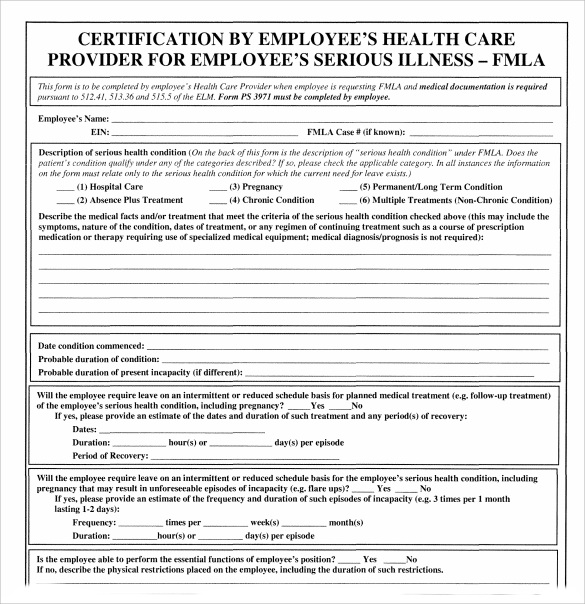Physical Therapists and FMLA: Can They Help?

Physical therapy often plays a pivotal role in helping patients recover from injuries, manage chronic conditions, and improve their quality of life. However, for many, the question arises: how does physical therapy intersect with their leave under the Family and Medical Leave Act (FMLA)? This blog post will delve into the specifics of FMLA and elucidate how physical therapists can significantly aid individuals on leave, potentially extending and enhancing their recovery period.
Understanding FMLA

The Family and Medical Leave Act (FMLA) provides employees with up to 12 weeks of unpaid, job-protected leave per year. This leave can be taken for several reasons, including:
- Birth and care of a newborn child of the employee
- Placement with the employee of a son or daughter for adoption or foster care
- Serious health condition that makes the employee unable to perform their job
- Caring for an immediate family member (spouse, child, parent) with a serious health condition
- Certain circumstances related to military service
ℹ️ Note: Eligibility for FMLA includes having worked for the employer for at least 12 months, with at least 1,250 hours worked during the previous 12-month period.
How Physical Therapy Can Support FMLA Leave

Physical therapy (PT) can be a critical component of recovery when an employee is on FMLA leave:
1. Improving Recovery Time

Physical therapy aims to restore and maintain physical function. For those on FMLA due to surgery, an accident, or a severe illness:
- Prevention of Further Injury: PT helps to mitigate risks that could prolong recovery.
- Reduced Pain: Techniques like manual therapy, dry needling, or therapeutic exercises can manage and lessen pain, making recovery more comfortable.
2. Enhancing Mobility

For those recovering from surgery or injury, PT:
- Uses gait training, balance exercises, and strength training to improve mobility.
- Can significantly reduce the time a patient needs to spend immobile, which in turn can shorten the overall leave period.
3. Educational Support

Physical therapists educate patients on how to:
- Properly manage their condition at home.
- Avoid behaviors that could exacerbate the injury.
- Perform self-care techniques, potentially reducing the need for extended leave.
Documentation and Coordination with Employers

When it comes to coordinating FMLA leave with physical therapy:
1. Medical Certification

Employees must provide medical certification that includes:
- The date the condition began
- How long and how often PT is required
- Whether the employee is able to perform the essential functions of their job with or without accommodation
2. Return-to-Work Programs

Physical therapists can:
- Create a return-to-work plan tailored to the employee’s recovery progress.
- Communicate with the employer to facilitate gradual re-entry into the workforce.
💡 Note: Employers might not always understand the specifics of physical therapy; hence, clear communication and documentation from therapists can be crucial.
Case Studies

Here are a few real-life examples:
| Name | Condition | PT Intervention | Outcome |
|---|---|---|---|
| John | Back Surgery | Post-op physical therapy, strength training, and mobility exercises. | Returned to work 8 weeks after starting PT, compared to a typical 12 weeks leave. |
| Maria | Pregnancy-related condition | PT focused on pelvic floor exercises, education, and ergonomic adjustments at work. | Her leave was reduced by 4 weeks, allowing an earlier return. |
| David | Shoulder Injury | Shoulder rehabilitation program, pain management strategies. | Reduced pain enabled light-duty return to work after 6 weeks. |

The Importance of FMLA in Physical Therapy

FMLA provides the necessary time for patients to:
- Focus on recovery without the pressure of work.
- Engage in a structured physical therapy program tailored to their needs.
- Ensure their health and future well-being are prioritized.
💬 Note: The synergy between FMLA leave and PT can create a supportive environment for recovery, benefiting both the employee and the employer in the long term.
Summarizing the Benefits

Integrating physical therapy with FMLA leave can lead to:
- Faster recovery times
- Reduced risk of complications or reinjury
- Improved quality of life for the employee
- Potential for earlier return to work, aiding business continuity
How long does FMLA leave usually last for physical therapy?

+
Typically, FMLA leave for physical therapy can last up to 12 weeks, but the exact duration depends on the individual’s medical needs and the physician’s recommendation.
Can I use FMLA leave for preventive physical therapy?

+
Yes, if you have a chronic condition that requires ongoing PT to manage symptoms or prevent complications, FMLA leave can be utilized.
Do I need to show my employer proof of physical therapy sessions?

+
Yes, employers can request medical certification for FMLA leave, which may include details from your PT sessions.
Can I continue PT after my FMLA leave is over?

+
Absolutely, physical therapy can continue as part of your recovery or maintenance plan, often outside the scope of FMLA leave.
Is there any financial support for PT while on FMLA?

+
FMLA leave itself is unpaid, but you might qualify for short-term disability or workers’ compensation, depending on your insurance coverage and state laws.



